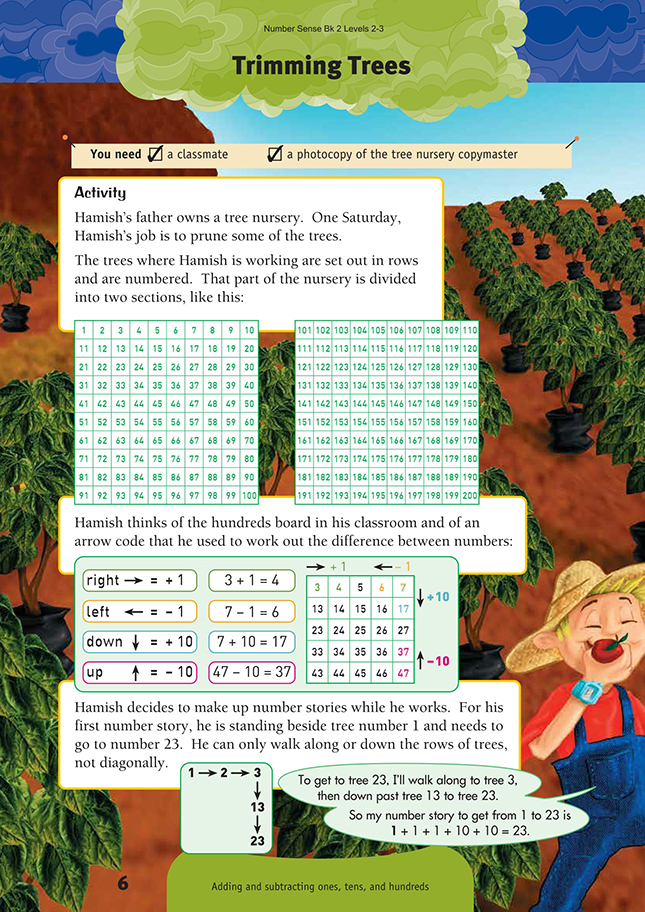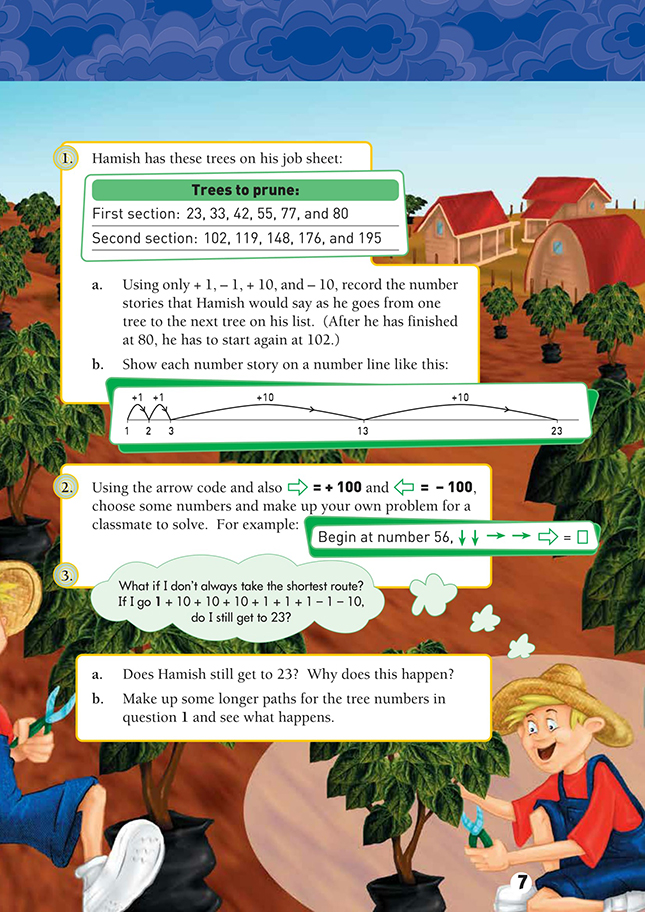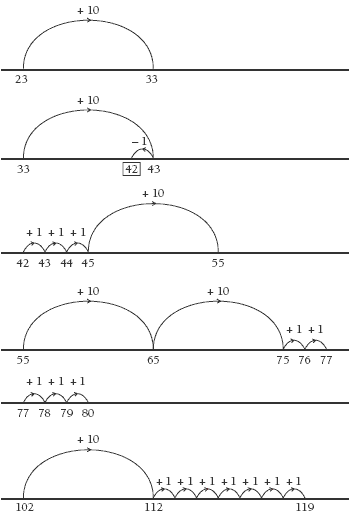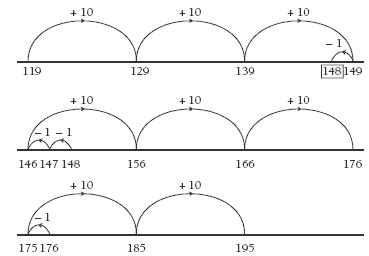This is a level 2 number activity from the Figure It Out series. It relates to Stage 5 of the Number Framework.
Click on the image to enlarge it. Click again to close. Download PDF (402 KB)
know the number of ones and tens in numbers
partition numbers into ones and tens
Number Framework Links
Use this activity to:
• develop the students’ knowledge of tens in numbers under 1 000 (stages 4 and 5)
• help the students who are beginning to use early additive strategies (stage 5) to become confident at this stage in the domain of addition and subtraction.
Students can solve the calculations in these problems using advanced counting strategies (stage 4).
FIO, Levels 2-3, Number Sense and Algebraic Thinking, Book Two, Trimming Trees, pages 6-7
Copymaster of Tree Nursery
A classmate
A hundreds board structure allows students to calculate addition and subtraction of ones, tens, and hundreds using stage 4 or stage 5 strategies. The students can use this structure to observe some directional patterns and form generalisations.
With a guided teaching group, model the context of this activity using a Hundreds Board (Material Master 4-4) and the Thousands Book (Material Master 4-7).
For question 1, the students who use imaging can use a blank hundreds grid to work out the steps that Hamish can take to each tree. Those who need to use materials can use a hundreds board. The Thousands Book provides some number clues and also encourages imaging. As the students report back, demonstrate how to record a sequence of moves. For example, for 33 to 42, the arrow ← ↓ sequence records the calculation “subtract 1 and add 10”.
You can use question 1b to check that the students recognise the difference between the starting point value and the size of the moves needed to reach the target. Use language such as: 1 and how many more makes 23 (that is, 1 + = 23)? Place value material will help the students to recognise the quantities involved rather than just seeing the number pattern.
Show the students how to record a negative movement along a number line. For example, to move from 33 to 42, Hamish could start at 33, move back 3, then down 10 and across 2. This could be recorded as:
With the aid of place value materials, challenge the students to establish the combined effect, that is, – 3 + 10 + 2 = + 9. It is important to do this with materials until number properties are established.
In question 2, highlight the special arrow symbol for 100 and make sure the students understand that it is the direction of the arrow that shows adding or subtracting.
Question 3 is a great chance for students to see that adding 10 and then subtracting 10 makes no difference to the result. This can lead to a discussion on the net effect of addition and subtraction, for example, + 10 – 2 is the same as + 8.
Answers to Activity
1. a. Answers may vary in order and combinations.
Possible number stories include:
23 + 10 = 33
33 + 10 – 1 = 42
42 + 1 + 1 + 1 + 10 = 55
55 + 10 + 10 + 1 + 1 = 77
77 + 1 + 1 + 1 = 80
102 + 10 + 1 + 1 + 1 + 1 + 1 + 1 + 1 = 119
119 + 10 + 10 + 10 – 1 = 148
148 – 1 – 1 + 10 + 10 + 10 = 176
176 – 1 + 10 + 10 = 195
b. Number lines may vary. Number lines for the number stories given for 1a are:
2. Problems will vary.
(The number story in the example shown is 56 + 10 + 10 + 1 + 1 + 100 = 178.)
3. a. Yes, because the + and – numbers in this expression cancel each other out. For
example, 10 + 10 – 10 = 10
b. Paths will vary. Each path should still have the same solution as before.




